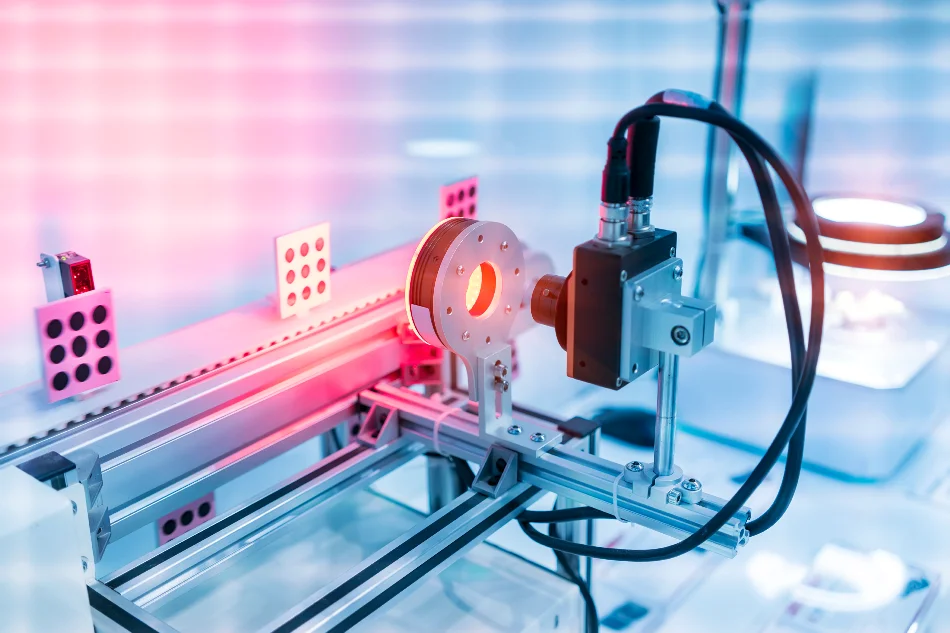Gear manufacturing is a critical aspect of mechanical systems, and precision is the name of the game. Whether it\’s for automotive transmissions, industrial machinery, or consumer electronics, gears play an essential role. To ensure the utmost quality in gear production, manufacturers are increasingly turning to Automated Visual Inspection Systems, a state-of-the-art technology that\’s reshaping the industry.
Introduction to Gear Manufacturing
Gear manufacturing encompasses the production of gears, which are mechanical components with precisely designed teeth to mesh seamlessly with other gears. In the world of gear manufacturing, precision is of paramount importance, as even the tiniest imperfections can lead to performance issues and increased maintenance costs.
Challenges in Gear Manufacturing
Traditional methods of gear inspection have limitations. They are time-consuming, and human operators can sometimes miss subtle defects. This can result in quality control problems, production delays, and higher costs. Additionally, with the growing demand for precision gears, traditional inspection methods struggle to keep pace with production requirements.
The Significance of Visual Inspection Systems
The answer to these challenges lies in Automated Visual Inspection Systems. These systems employ advanced cameras and sensors to scrutinize gears with a level of precision that the human eye simply cannot achieve. They excel at spotting defects, measuring dimensions, and conducting other critical checks in real-time.
Advantages of Automated Visual Inspection Systems
- Unprecedented Precision: These systems can identify imperfections down to the micrometer level.
- Enhanced Efficiency: Inspection is completed in a matter of seconds, improving production rates.
- Reduced Human Error: Human subjectivity is eliminated, resulting in more accurate inspections.
- Cost Savings: Fewer defective parts and lower labor costs.
- Consistent Quality: Each gear is inspected with the same high standard.
Operational Mechanisms of Visual Inspection Systems
These systems combine cameras, sensors, and sophisticated software to examine gears. The images captured are analyzed using algorithms to detect defects, measure dimensions, and ensure compliance with specifications. This process is not only incredibly swift but also highly accurate, making it a valuable addition to any manufacturing process.
Key Features to Consider When Choosing a Visual Inspection System
When selecting an Automated Visual Inspection System, manufacturers should consider factors like accuracy, speed, ease of integration, and scalability. The system should be adaptable to different gear types and sizes.
Industries Benefiting from Automated Visual Inspection
- Automotive: Precision gears are essential for smooth transmissions.
- Aerospace: Reliability is paramount in aircraft components.
- Medical Devices: Gears are used in various life-saving medical equipment.
- Consumer Electronics: Tiny gears play a big role in gadgets we use daily.
The Integration of AI and Machine Learning
To further enhance the capabilities of these systems, many manufacturers are incorporating artificial intelligence and machine learning. These technologies empower the system to learn from previous inspections, thereby improving its ability to identify defects and anomalies.
Real-world Applications
Automated Visual Inspection Systems find applications in a broad spectrum of industries, from automotive and aerospace to medical device manufacturing. They play a pivotal role in ensuring the quality and reliability of gears used in various applications.
Cost Reduction and Improved Efficiency
By reducing the number of defective parts and minimizing human labor, manufacturers can realize substantial cost savings. Increased efficiency also translates to faster production times and shorter time-to-market.
Future Trends in Gear Manufacturing
The future of gear manufacturing hinges on the continuous advancement of Automated Visual Inspection Systems. Progress in AI, machine learning, and sensor technologies will further enhance the precision and speed of inspections.
The Vital Role of Quality Control
Quality control is indispensable in gear manufacturing, as it directly influences the performance and longevity of mechanical systems. Automated Visual Inspection Systems are a powerful tool in ensuring that every gear meets the highest standards.
Conclusion
Automated Visual Inspection Systems have brought about a revolution in gear manufacturing, offering precision, efficiency, and cost savings. With the demand for high-quality gears on the rise, these systems are fast becoming indispensable across various industries. Don’t miss out on the tremendous benefits that Trident’s Visual Intelligence Systems offer. Contact Trident today to learn more about how these innovative solutions can transform your gear manufacturing operations.
FAQs
- Are Automated Visual Inspection Systems expensive to implement? While there is an initial investment, the long-term cost savings outweigh the upfront costs.
- Can Automated Visual Inspection Systems handle all gear types? Yes, these systems are versatile and can be adapted for various gear types and sizes.
- How do these systems cope with variations in lighting and environmental conditions? Advanced lighting and sensor technologies enable these systems to adapt to varying conditions, ensuring accurate inspections.
- Can Automated Visual Inspection Systems be retrofitted into existing manufacturing lines? Yes, many manufacturers have successfully retrofitted these systems into their existing processes.
- How do I select the right Automated Visual Inspection System for my manufacturing needs? When choosing a system, consider factors such as accuracy, speed, ease of integration, and scalability to align with your specific requirements.

